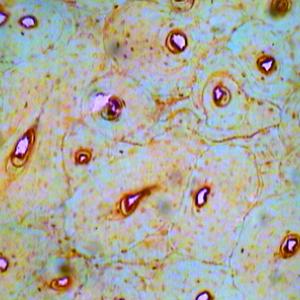College of Liberal Arts & Sciences
11A10.10 - Model of the Human Skeleton - Bones
No advanced notice required. Parts of the Skeleton are numbered and an explanation of these parts can be found in the file.
- Nikola Poljak, Dora Klindzic, and Mateo Kruljac, "Effects of Exoplanetary Gravity on Human Locomotion Ability", TPT, Vol. 57, #6, Sept. 2019, p. 378.
- Scott A. Lee and Zachary Richards, "The Surprisingly Strong Arms of the Therizinosaur Dinosaurs", TPT, Vol. 56, #7, Oct. 2018, p. 432.
- Nancy Donaldson, "Increasing Your Body of Physics Knowledge", TPT, Vol. 54, #1, Jan. 2016, p. 58.
- Scott Lee, "Scaling in Theropod Dinosaurs: Femoral Bone Strength and Locomotion II", TPT, Vol. 53, #3, Mar. 2015, p. 158.
- Scott Lee, "Scaling in Theropod Dinosaurs: Femoral Bone Strength and Locomotion", TPT, Vol. 53, #2, Feb. 2015, p. 84.
- Scott A. Lee, "Scaling in Theropod Dinosaurs: Femoral Bone Dimensions", TPT, Vol. 52, #5, May 2014, p. 304.
- John L. Roeder, "The February TPT", TPT, Vol. 46, #5, May 2008, p. 262.
- Giuseppe Colicchia, Dean Zollman, Hartmut Wiesner, and Ahmet Ilhan Sen, "Kinematics of a Head-Neck Model Simulating Whiplash", TPT, Vol. 46, #2, Feb. 2008, p. 88.
- Kathryn Grandfield, "Bone, Implants, and Their Interfaces", Physics Today, Vol. 68, #4, Apr. 2015, p. 40.
- "Where Bone Meets Implant", Physics Today, Vol. 67, #11, Nov. 2014, p. 96.
- Robert O. Ritchie, Markus J. Buehler, and Paul Hansma, "Plasticity and Toughness in Bone", Physics Today, Vol. 62, #6, June 2009, p. 41.
- Giuseppe Colicchia, "Sit Up Straight! It's Good Physics", Physics Education, Vol. 40, #4, July 2005, p. 365.
- "Double Bonus: Exoskeleton vs. Endoskeleton", 50 Fun Experiments for the Mad Scientist in You, National Geographic Kids, p. 62.
- Jearl Walker, "3.48, Knuckle Cracking", The Flying Circus of Physics Ed. 2, p. 165.
- Curt Suplee, "Evolution: Nature's Test Drives", Everyday Science Explained, National Geographic, p. 196 - 197.
- Curt Suplee, "Bones and Teeth", Everyday Science Explained, National Geographic, p. 240 - 241.
- Sara Stein, "Skinny Bones", The Science Book, p. 134.
- Sara Stein, "Broken Bones", The Science Book, p. 131.
Disclaimer: These demonstrations are provided only for illustrative use by persons affiliated with The University of Iowa and only under the direction of a trained instructor or physicist. The University of Iowa is not responsible for demonstrations performed by those using their own equipment or who choose to use this reference material for their own purpose. The demonstrations included here are within the public domain and can be found in materials contained in libraries, bookstores, and through electronic sources. Performing all or any portion of any of these demonstrations, with or without revisions not depicted here entails inherent risks. These risks include, without limitation, bodily injury (and possibly death), including risks to health that may be temporary or permanent and that may exacerbate a pre-existing medical condition; and property loss or damage. Anyone performing any part of these demonstrations, even with revisions, knowingly and voluntarily assumes all risks associated with them.

